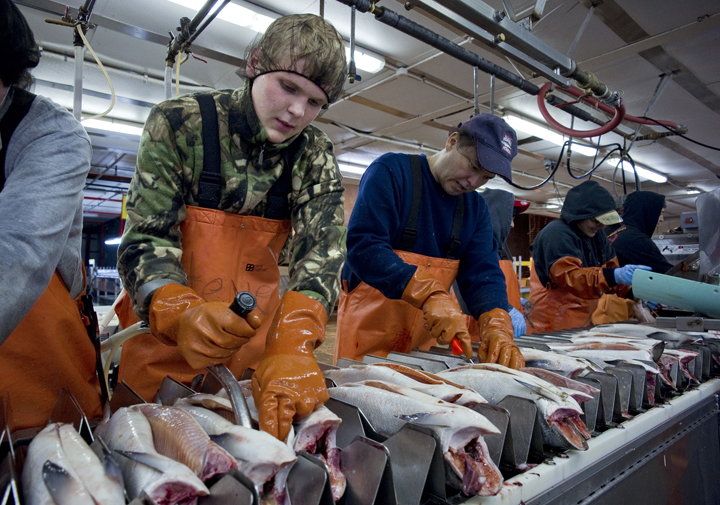Juneau is now the No. 41 fishing port in the United States, according to a new report published Wednesday by the National Marine Fisheries Service. That’s up from No. 44.
The annual Fisheries of the United States report shows Juneau received 17 million pounds of seafood in 2015, down from 19 million pounds in 2014 and 20 million in 2013.
The national report always covers the previous calendar year, which means it doesn’t include the results of this year’s disastrous pink salmon run and mediocre chum salmon run.
[With poor pink salmon run, legislator seeks disaster aid for Southeast fishermen]
In 2015, the Southeast salmon fishery — which makes up the vast majority of Juneau’s landings — was slightly larger than it was in 2014, according to figures from the Alaska Department of Fish and Game.
David Harris, the area management biologist for Fish and Game, said that even though the numbers were about the same in Southeast overall, they were distributed differently than the year before. Southern Southeast had higher returns than northern Southeast. That would have affected where in Southeast the fish were delivered.
“The fact that Juneau would have a lower landing would reflect something with our local processors,” he said.
That theory is supported by the figures in the new report, which show Petersburg with 70 million pounds of seafood landed in 2015, up 5 million pounds.
Nationwide, American ports received 9.718 billion pounds of seafood last year, up from 9.486 billion in 2014. Even though Juneau received less seafood last year, it fared better in the national rankings because more of the seafood was concentrated in fewer ports.
Juneau finished just behind Key West, Florida and just ahead of Galveston, Texas in the rankings by weight of seafood landed.
When rankings are made by the value of the seafood, Juneau is No. 47, with its catch worth $23 million in exvessel value.
Nationally, Alaska is the source of more than half of the seafood produced in the U.S.
“Of course, Alaska is again the shining star in this report,” said Julie Speegle, a spokeswoman for the National Marine Fisheries Service in Juneau. “We led all states in both volume and value of landings.”
More fish is landed in the 49th state (6.038 billion pounds) than in all the other states combined. Last year’s landings were a record for Alaska, as pollock — the flaky whitefish that ends up in fast-food sandwiches — increased 4 percent from the previous year. Pollock is the No. 1 species caught in the U.S., mostly carried away by catcher-processors and trawlers that work the Bering Sea and Western Gulf of Alaska. More than 3.1 billion pounds was caught in 2015.
Because of that, the top three fishing ports in the U.S. and six of the top 10 are located in Alaska. Dutch Harbor remains the No. 1 fishing port in the nation, with 787 million pounds of seafood — mostly pollock and cod — followed by Kodiak and Akutan (the latter is grouped with other Aleutian ports for recordkeeping).
Alaska Peninsula ports (a combined category), Naknek and Cordova were eighth, ninth and 10th respectively.
Dutch Harbor’s 2015 tally is a new record for single-port quantity, and this is the 19th consecutive year that it has held the top spot.
When the rankings are sorted by value, New Bedford, Massachusetts — home to a significant scallop fleet — is the No. 1 port in the nation, followed by Dutch Harbor and the Alaska ports. Honolulu, Hawaii, the No. 37 port by landings is sixth in the country by value.

